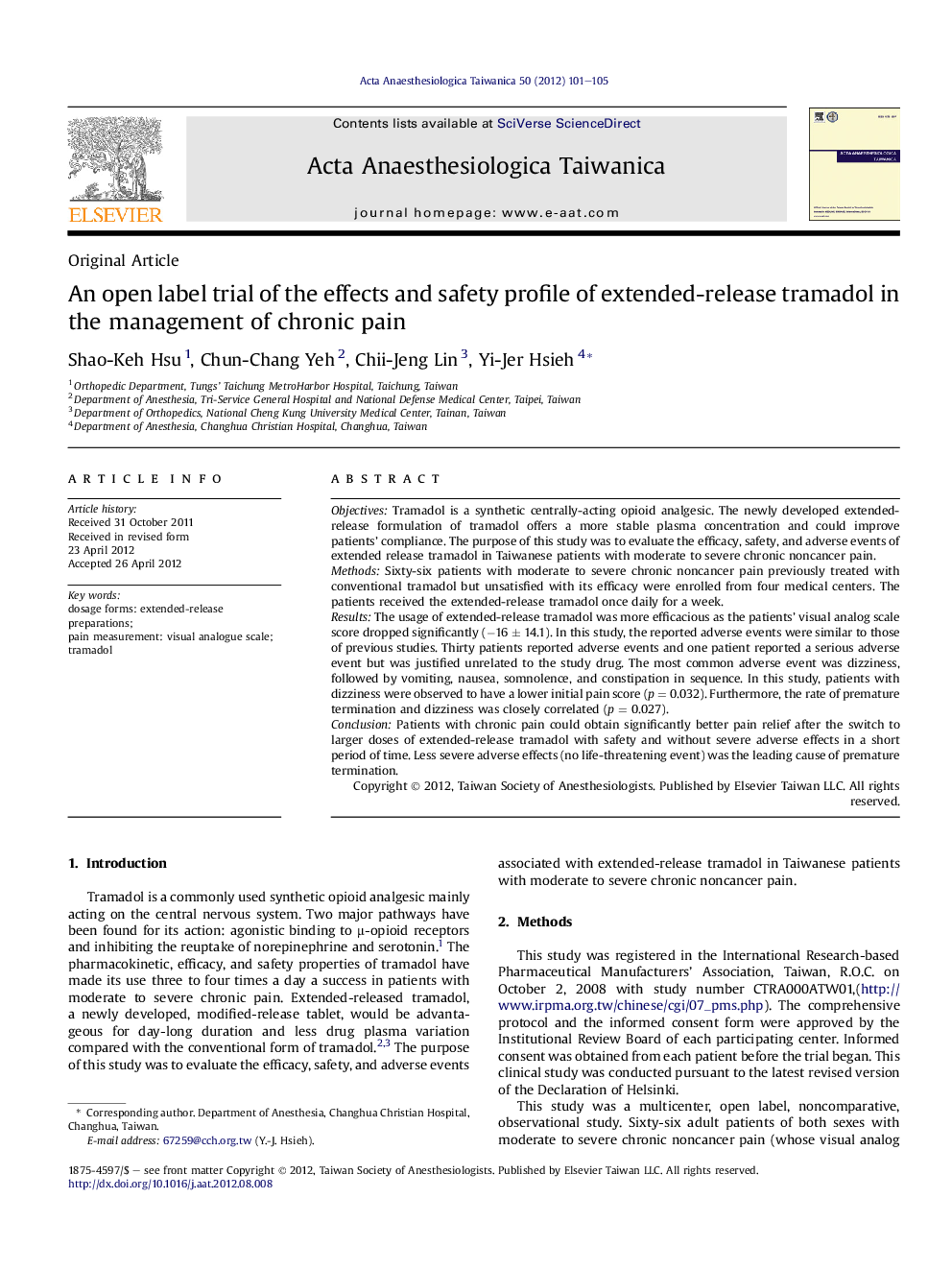| Article ID | Journal | Published Year | Pages | File Type |
|---|---|---|---|---|
| 2741499 | Acta Anaesthesiologica Taiwanica | 2012 | 5 Pages |
ObjectivesTramadol is a synthetic centrally-acting opioid analgesic. The newly developed extended-release formulation of tramadol offers a more stable plasma concentration and could improve patients' compliance. The purpose of this study was to evaluate the efficacy, safety, and adverse events of extended release tramadol in Taiwanese patients with moderate to severe chronic noncancer pain.MethodsSixty-six patients with moderate to severe chronic noncancer pain previously treated with conventional tramadol but unsatisfied with its efficacy were enrolled from four medical centers. The patients received the extended-release tramadol once daily for a week.ResultsThe usage of extended-release tramadol was more efficacious as the patients' visual analog scale score dropped significantly (−16 ± 14.1). In this study, the reported adverse events were similar to those of previous studies. Thirty patients reported adverse events and one patient reported a serious adverse event but was justified unrelated to the study drug. The most common adverse event was dizziness, followed by vomiting, nausea, somnolence, and constipation in sequence. In this study, patients with dizziness were observed to have a lower initial pain score (p = 0.032). Furthermore, the rate of premature termination and dizziness was closely correlated (p = 0.027).ConclusionPatients with chronic pain could obtain significantly better pain relief after the switch to larger doses of extended-release tramadol with safety and without severe adverse effects in a short period of time. Less severe adverse effects (no life-threatening event) was the leading cause of premature termination.
